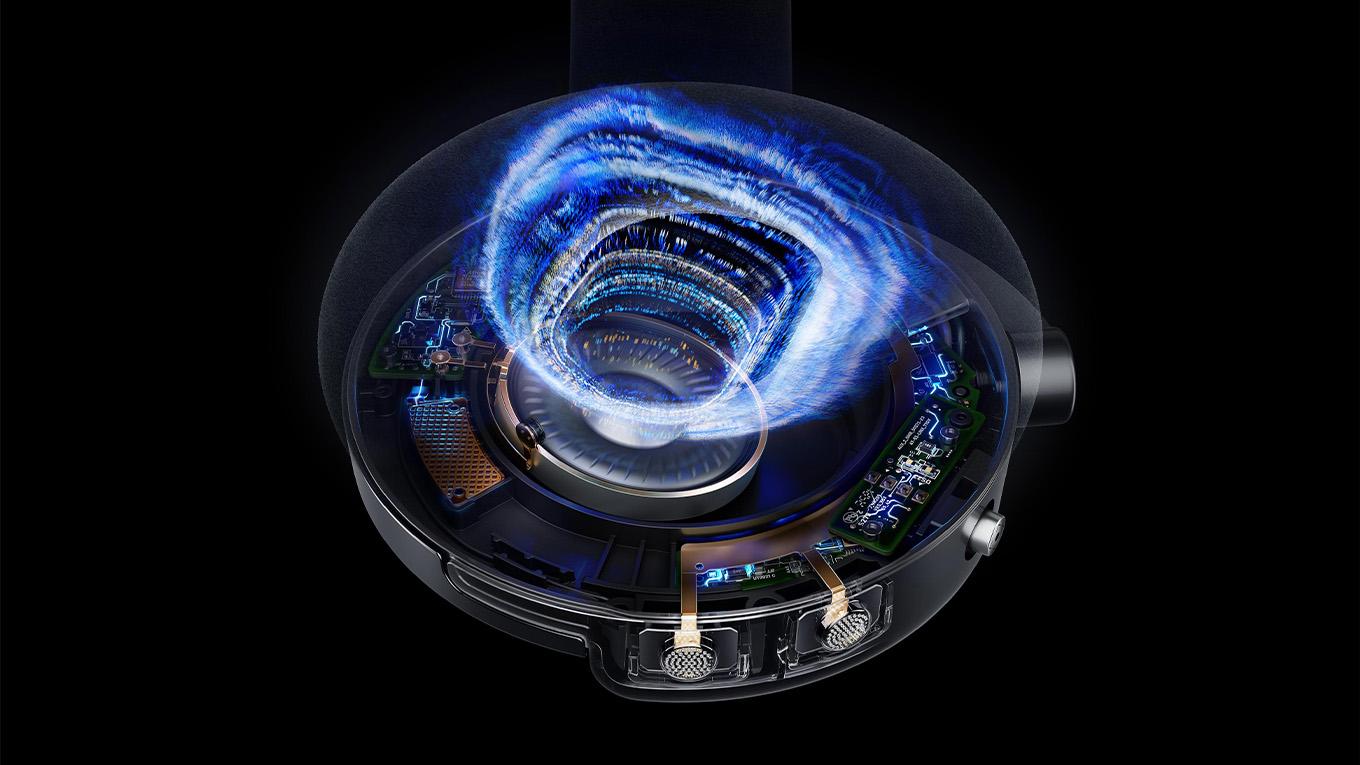Insights | Audio | Noise Cancelling
The science behind the silence: how do noise-cancelling headphones work?
In bustling modern life, finding moments of quiet can be a challenge. Whether you're commuting on a noisy train or trying to focus in a busy office, the hum of background noise can be a constant distraction. This is where noise-cancelling headphones come in – providing a solution for blocking out increasing unwanted sound.
We explore the technology behind noise-cancelling headphones, how they create opposing sound signals, and offer an immersive listening experience.
What is noise cancellation?
Noise-cancelling technologies, which were initially developed for aviation and military purposes, have made their way into consumer products like headphones and earbuds.
These technologies use microphones to monitor external sounds and generate inverted sound waves that mimic the incoming noise you want to get rid of.
Picture two identical sound waves – one on top of the other with matching peaks and troughs. At 0 degrees, the two waves are said to be completely ‘in-phase,’ which when added together result in increased amplitude and an even louder sound.
But what happens if you offset them by 180 degrees?
The waves then become opposing and when they combine, they cancel each other out through what’s known as ‘destructive interference’.
This explains the basic science behind noise cancellation, but how is it used in headphones?
How noise-cancelling headphones work
Unlike traditional headphones that merely isolate your eardrum from external noise, active noise-cancelling (ANC) headphones constantly monitor and counteract unwanted sounds through a combination of tiny microphones and intelligent algorithms.
Microphones on the ear cup ‘listen’ to external sounds. Inverted sound is generated by an ANC chipset, which is then fed into the headphone speaker drivers, along with your music.
Active noise cancellation works best on steady, low-to-medium frequency sounds like the thrum of heavy traffic or airplane engine noise. It’s therefore ideal for frequent flyers who enjoy catching up on a podcast, or commuters who want to listen to music while reducing the chatter in their train carriage.
Engineered for detailed, realistic sound, the Dyson OnTrac™ headphones use eight noise-cancelling microphones to detect surrounding noise 384,000 times per second.
The headphones offer up to 55 hours of audio with ANC¹ and create sound that’s opposite to your background noise – neutralizing the sound waves and ensuring that audio is all you hear.
Passive noise cancellation
Noise-cancelling headphones remove noise in more ways than one. They also use passive noise cancellation, which is the use of physical design to reduce external noise.
Robust ear cup materials combine with a headband and ear cushions to consistently seal your ear into the headphones – making it harder for external sound waves to reach your eardrum.
The Dyson OnTrac™ headphones combine passive attenuation with its active noise cancellation to cancel up to 40dB of unwanted noise and provide uninterrupted, pure audio. Soft microfibre ear cups seal in sound and seal out noise.
For more on the differences between active and passive noise cancellation technologies, read our article The difference between active noise cancellation and passive noise cancellation.
Adjustable active noise-cancelling modes
Typically, ANC headphones come with different active noise cancellation modes and settings. This is useful in environments where you want to hear more or less of the sound around you. To enjoy your favorite album undisturbed, choose the full noise-cancelling function. On the Dyson OnTrac™ headphones, this is the default setting, known as Isolation mode.
Then, if you want to be more aware of your surroundings – if you’re out walking or want to have a conversation, for example – turn on ‘transparency’ mode to hear more ambient noise.
The Dyson OnTrac™ Transparency mode lets some of the outside sounds filter through. It essentially does half the work of ANC – still using the microphones to listen to external sounds, but instead of inverting sound waves, outside sounds are channeled into the headphone speakers and amplified. A simple double tap on the ear cup switches between Transparency mode and Isolation mode.
A popular accessory for those seeking respite from urban noise, ANC headphones help you concentrate on what’s important, while enhancing your listening experience. Through the intricate interplay of microphones, careful electro-acoustic design, and digital signal processing, ANC technology allows you to immerse yourself fully in your audio journey.
-


Headphones,
remasteredAn all-new expression in sound is coming soon.
Sign up for updates about our remastered headphones.
Read more
-
Insights | Audio | Noise-canceling
The difference between active noise cancellation and passive noise cancellation
-
Insights | Audio | Noise-canceling
-
Insights | Audio | EQ
Discover Dyson
¹ Molesworth, B.R.C. and Burgess, M. (2013) ‘Improving intelligibility at a safety critical point: In flight cabin safety’, Safety Science, 51(1), pp. 11–16. doi:https://doi.org/10.1016/j.ssci.2012.06.006.
Press contacts
Canada
Email us at CAN.PR@dyson.com
Social media
Twitter: @askdyson
YouTube: youtube.com/Dyson
Facebook: facebook.com/dyson
Instagram: @dyson, @dysonbeauty
LinkedIn: Dyson







